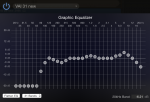dorwardpaul
New member
Hey Guys,
First post here
I am in to recording i have a carvin 4 x 12 cab and a sure Sm57
I get so much thud and low top end even when it sounds decent in the room - i always have to eq post recording.
I have tweaked the amps eq and got it to sound good on play back, but when you go and listen to the actual live sound in sounds awful - super high thin tinny just awful .
So my question is this - do i get a good live sound then mic it up and polish it with eq in the mix . . or use an awful live sound the records well with a flat eq...
signal path is this for a good live sound
guitar - Boss NS2 - overdrive pedal - compressor - front of amp - amp eq settings presence 7, treble 7, mid 5, bass 6.5, drive 7 - G system in loop with minimal effects slight reverb and delay and minimal eq tweets, no frequency adjusted more than 4DB up or down - cab mic'd with a sure SM57 1.5 inchs from the cloth on outer edge of dust cap - m audio mbox mic pre - garage band.. hopefully i have attached my eq settings in garage band..
the garage band eq I'm notching out below about 80z - another big scoop from 160 is t 400 is as i get awful cardboard type booming sound..
Any help tips - advice much much appreciated
Thanks all
First post here

I am in to recording i have a carvin 4 x 12 cab and a sure Sm57
I get so much thud and low top end even when it sounds decent in the room - i always have to eq post recording.
I have tweaked the amps eq and got it to sound good on play back, but when you go and listen to the actual live sound in sounds awful - super high thin tinny just awful .
So my question is this - do i get a good live sound then mic it up and polish it with eq in the mix . . or use an awful live sound the records well with a flat eq...
signal path is this for a good live sound
guitar - Boss NS2 - overdrive pedal - compressor - front of amp - amp eq settings presence 7, treble 7, mid 5, bass 6.5, drive 7 - G system in loop with minimal effects slight reverb and delay and minimal eq tweets, no frequency adjusted more than 4DB up or down - cab mic'd with a sure SM57 1.5 inchs from the cloth on outer edge of dust cap - m audio mbox mic pre - garage band.. hopefully i have attached my eq settings in garage band..
the garage band eq I'm notching out below about 80z - another big scoop from 160 is t 400 is as i get awful cardboard type booming sound..
Any help tips - advice much much appreciated
Thanks all





